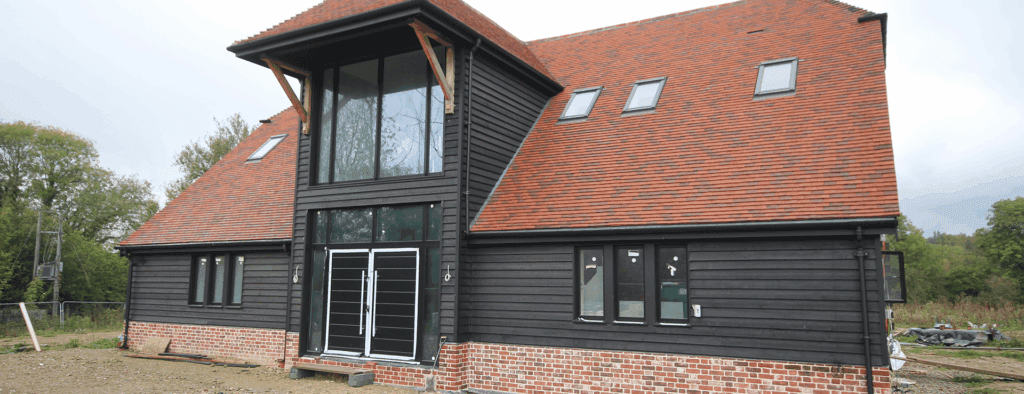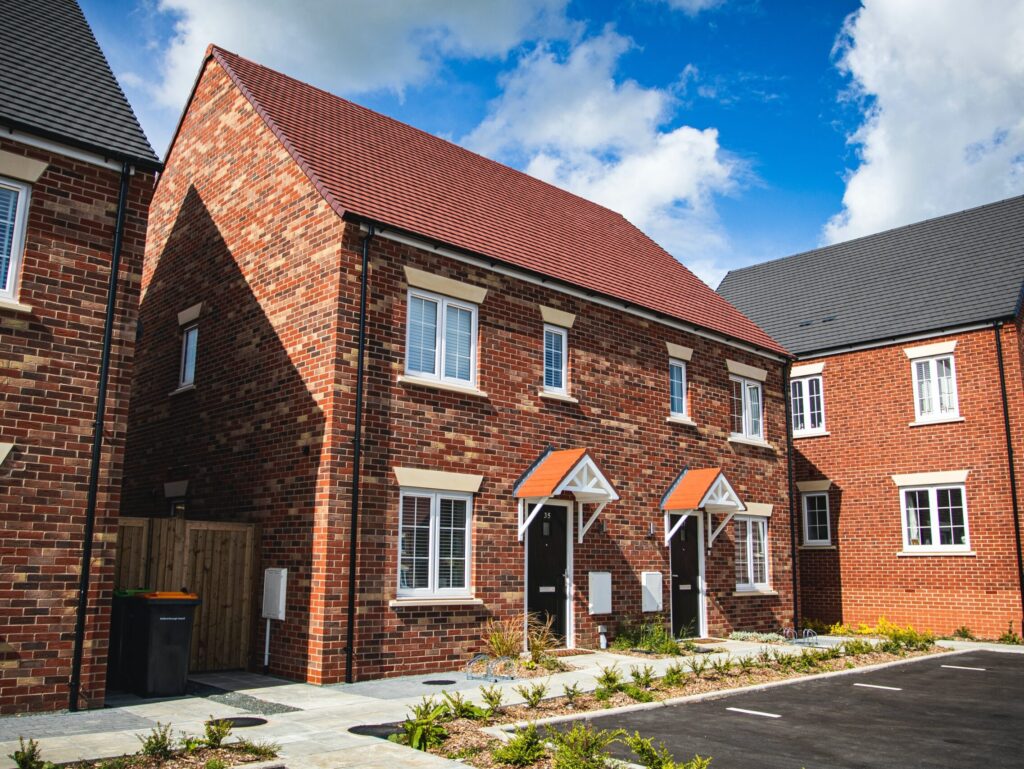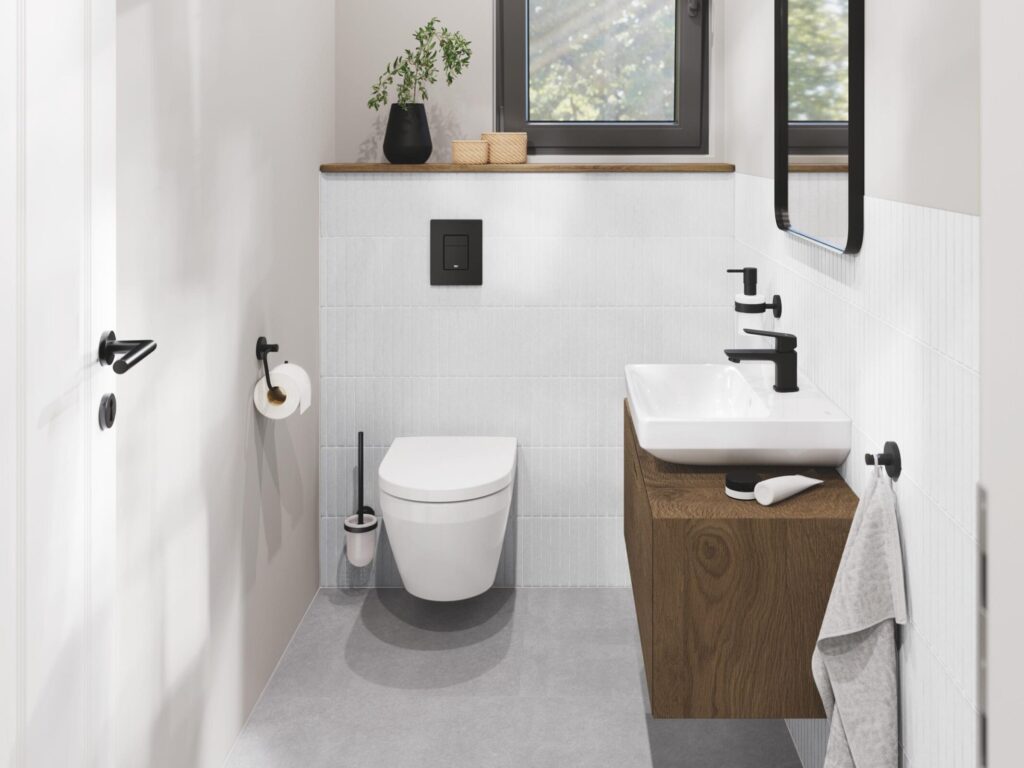Showhome takes a look at what heating options housebuilders have for when the revised Part L 2020 comes into action to reduce carbon emissions
Before the end of the year, England and Wales are expected to publish their revised versions of Part L to the Building Regulations for new homes. These documents set limits on the energy demand of properties and the upcoming updates are designed to provide a stepping-stone to even more stringent requirements coming in 2025. As such, rather than simply looking to comply, the construction industry should look to the changes as an opportunity to upskill, gaining the training and experience needed to be fully ready for the developments ahead.
What are the new carbon reduction targets? The consultations provided two options for reducing carbon emission targets. In the English consultation, these were for a 20% or 31% (preferred) reduction over the existing requirements whilst in Wales more ambitious targets of 37% (preferred) or 56% were set.
What is Primary Energy? Primary Energy has been introduced as the new principal metric within the revised regulations, with carbon emissions now relegated to a secondary metric. Primary is designed to consider both the energy needed to prepare a fuel for use, and the final energy demand of the property.
The move away from using carbon emissions to set performance levels reflects the expectation that grid energy will be increasingly decarbonised over coming years. As this process continues, carbon emissions will therefore become a less useful measure of how responsibly a building uses energy.
How is Primary Energy calculated? Primary Energy Factors (PEFs) have been pre-calculated (within SAP) for each common fuel type based on upstream production activities needed to get them to market. These include planting and cultivation of biofuels, extraction and transportation. A property’s energy demand for each use (space heating, lighting etc.) is calculated and these are multiplied by the PEF of the fuel type used for each. By adding these together, we get a total Primary Energy demand for the property.
What are the limitations of the new Part L requirements outlined within the consultations?
A key area of concern raised by several respondents to the English consultation was the suggestion that the Fabric Energy Efficiency Standards (FEES) should be removed. The FEES are used in the current version of ADL1A in England to set a clear minimum energy performance target, however, the consultation argued it should be removed to avoid confusion with the Primary Energy metric.
Without the FEES, the only control on building fabric performance would be the worst-case backstop U-values. This is the approach which is already used in Wales (which never adopted the FEES), however, the backstop values proposed in the English consultation are weaker than even the current ones in Wales.
With the Primary Energy calculation allowing onsite renewable generation to be subtracted from overall demand, this could open the door for homes to be built to lower standards of fabric performance than the current standards (with FEES) will allow, providing it is masked with generation from onsite renewables.
In essence, this could create homes which waste considerable amounts of energy. In fact the Committee on Climate Change estimated that it could lead to household bills which are 50% higher than at present – potentially pushing owners towards fuel poverty. Furthermore, during the winter months when demand is high, technologies such as heat pumps and photovoltaic (PV) panels are less effective. This could place additional pressure on the grid and actually mean carbon intensities during this period creep up.
For these reasons, it makes much more sense to adopt a whole building approach which focuses on limiting demand through measures including improved fabric performance and careful detailing before considering renewable options.
What U-values will new homes be expected to achieve under Part L 2020? The suggested fabric parameters provided within the notional dwelling for Option 1 of the English consultation and Option 1 and 2 of the Welsh consultation provide a reasonable starting point. Whilst not compulsory, these values are expected to become the limiting back-stop U-values within the region’s 2025 standards so it makes sense for firms to begin familiarising themselves with the approaches needed to achieve these values routinely in the future.
Why are Approved Construction Details being removed? The Approved Construction Details (ACDs) were first developed as a standardised solution to help project teams to address common thermal bridges. In practice, however, contractors regularly come across non-standard junctions and if the solution isn’t adapted appropriately this can lead to thermal bridging and underperformance.
To address this, the consultations have recommended that the ACDs are removed and that project teams work to model/calculate their own thermal bridging values. To encourage this, the global backstop values for thermal bridging (used where no appropriate detail is provided) will be worsened in SAP. This ultimately means that paying attention to details will be crucial to achieving compliance.
Low carbon heating options
To reach net zero carbon emissions by 2050, we will need to change the way we heat our homes and buildings. In the UK, we will need to phase out oil and gas heating systems like boilers to reduce our dependence on fossil fuels, replacing them with renewable, low carbon technologies. These systems can help to reduce carbon dioxide emissions from households.
There are three primary renewable technologies – heat pumps, solar water heating and biomass. There are two main types of heat pump – ground source and air source – in addition to the less common water source heat pump. Heat pumps use less fossil fuels than most other systems, so are a more sustainable, low carbon source of heating.
They work by absorbing heat from a source and transferring it to a fluid, which is compressed to increase the temperature further. The heat is typically transferred from the fluid into water, which is then used to provide heating and hot water to your home. You’ll need to consider whether you have space for a heat pump; ground source heat pumps require garden space to install a pipe loop below ground, while air source heat pumps require space around them to get a good flow of air.
Since heat pumps work best when producing heat at a lower temperature than traditional boilers, it’s important that your home is well insulated and draught-proofed for the heating system to be effective.
You should always check whether you require planning permission from your local planning authority before installing any new renewables system. Installing a ground source heat pump can be more disruptive, so it’s worth combining the installation with other building work.
Solar water heating systems use solar panels, called collectors, fitted to your roof. These collect heat from the sun and use it to heat up water that’s stored in a hot water cylinder. A conventional boiler or immersion heater can be used to make the water hotter, or to provide hot water when solar energy is unavailable.
You’ll need around 4-5 square metres of roof space for solar panels, which receives direct sunlight for most of the day. Ideally, your roof should face east to west, however solar panels can also be hung from a wall or mounted to a frame on your roof.
Check that your conventional boiler and hot water cylinder system is compatible with solar water heating. If you have a combi boiler and no hot water cylinder, the technology may not work with your existing heating and hot water system. Most domestic solar water heating systems below a certain size don’t require planning permission. However, check with your local planning officer, especially if your home is a listed building or in a conservation area.
Lastly, Biomass systems burn wood pellets, chips or logs to heat a single room, or to power central heating and hot water boilers. While burning the wood does emit carbon dioxide, it’s at a lower level than coal or oil provided the fuel is sourced locally. Biomass is considered a sustainable option as long as new plants and trees continue to grow in place of those used for fuel. If you’re thinking of installing a biomass boiler, you’ll need space for the boiler itself, as well as somewhere to store the pellets, chips or logs. You’ll also need a flue that meets regulations for wood-burning appliances.
There are several options to choose from, which generate heat in different ways and can play different roles – for example, providing hot water, space heating, or both. You should try and source a local fuel supplier and ensure they are on the registered list of sustainable biomass fuel suppliers. Finally, while you may not need planning permission, you should always check first.
While there is flexibility on how to meet the targets and there are a variety of renewable energy sources available, the Government expects heat pumps will be the primary heating technology for new homes. However, in order for heat pumps to work at their most efficient (COP) level they need to run at 35°C – this is something only underfloor heating can do.
When it comes to design and installation of the system, accuracy is critically important because, if the system is not designed properly, it won’t reach its required efficiency. The knock-on effect of that is increased occupier bills, so it’s important to work with suppliers who can provide expert guidance at both the design and installation stage.
Aside from future proofing new properties in line with the incoming Part L revisions, underfloor heating also offers additional health, safety and design benefits, one being improved indoor air quality as radiant heat reduces the movement of dust – making it one of the healthiest ways to heat a building.
Ensuring that the system offers all the performance, without hindering the aesthetic aspects of a new build home, underfloor heating can be installed beneath all floor coverings, even carpet, without impairing the performance of the system. There’s also no increase in floor build up required for ground floor screeded applications.
The pace of change in industry requirements is expected to be rapid over the coming years. As such, it is essential that practitioners really get to grips with the new Part L, and the overall direction of travel, to ensure they are properly prepared for the challenges ahead.
Commentary: Joanna Crown of WMS
Joanna Crown of WMS, supplier and installer of underfloor heating systems, offers advice for housebuilders navigating the shift to low carbon heating systems and explains why underfloor heating is the perfect partner for renewable technologies.
The industry is set to experience the single biggest change the UK housing market has ever seen as the Government plans to update Part L for 2025, with interim revisions to be regulated in late 2021 before coming into effect in 2022.
These initial changes include enforced 31% reduction in CO2 from new dwellings compared to current standards; for new heating systems to be designed with a maximum flow temp of 55°C or lower; plus, different zones within the home will require self-regulating control devices for the heating system.
With big changes on the horizon, housebuilders now need to turn their attention away from gas boiler installations and traditional convection heating systems. Wall-mounted radiators will more than likely become a thing of the past and homeowners will begin to discover a new way of heating their homes.
Commentary: Clarissa Youden, Associate Director from Total Home Environment
The latest move to reduce carbon emissions by investing in super-insulated and airtight building fabrics, has enabled highly energy efficient heat pump ventilation systems (HPV) to negate the need for a formal heating system, whilst redefining levels of indoor air quality and comfort.
Imagine the appeal of a well-insulated and airtight home that has fresh filtered-air all year round. A home which does not rely on fossil fuel, that recovers all waste heat and that has responsive, energy efficient space heating and cooling, all without a formal heating system. This is no longer simply the domain of the bespoke eco home, but a reality that has been made possible by advances in Mechanical Ventilation with Heat Recovery (MVHR) and the development of Heat Pump Ventilation (HPV).
One of the best things to reduce carbon emissions in homes, is to conserve heat by investing in a better insulated and airtight fabric. In doing this though, air-quality is compromised and today especially, we are more aware of the dangerous things that can be trapped in the air that we breathe. The solution is normally MVHR, but you can go a step further with HPV which combines mechanical heat recovery ventilation with an integral heat pump. It doesn’t require an irritating gas connection, smelly oil, pellet storage space, ground-drilling, inconvenient radiators, underfloor heating pipes or planning permission.
If homes are to be increasingly well-insulated and air-tight then MVHR is essential. By utilising the ventilation infrastructure for heating and cooling purposes too, Heat Pump Ventilation assists developers in saving on build time, reducing the number of trades on site and meeting those all-important carbon reductions.
The principle behind heat pump ventilation is grounded in health and sustainability; the more heat we recover, the less we need to generate.
To stay up to date on the latest, trends, innovations, people news and company updates within the UK property and housebuilding market please register to receive our newsletter here.
Media contact
Rebecca Morpeth Spayne,
Editor, Showhome Magazine
Tel: +44 (0) 1622 823 922
Email: [email protected]












